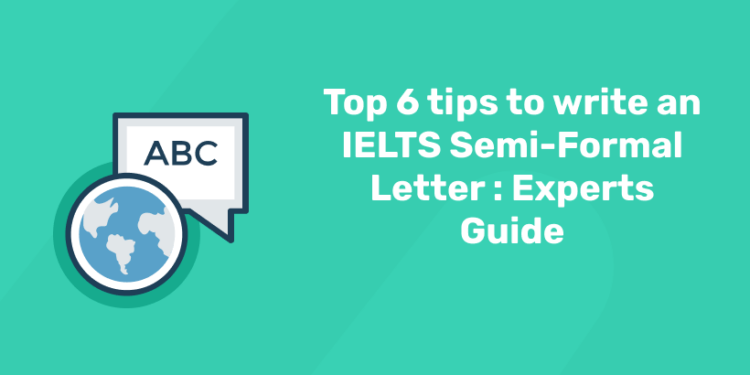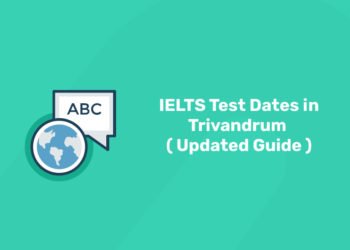Table of Contents
This post will help you to write better letters in task 1 of the General Training IELTS paper.
Writing an IELTS Semi-Formal Letter
Instructions will be given to you along with three points that are to be included in your IELTS semi-formal letter. It is important that you include all 3 bullet points.
Your first task is to identify your audience; by this, I mean the person or people you are writing to. This is really important as it will help you decide on the formality of the language and style of the letter.
Lets Go through a sample question given below:
You are working for a company. You need to take some time off and want to ask your manager about this.
Write a letter to your manager.
In your letter:
- Explain why you want to take time off
- Give details of the amount of time you need
- Suggest how your work could be covered while you are away.
In this exam task, the audience is your manager and therefore you should use a semi-formal style as you are writing to a person you know, but not very well.
Semi-formal letters are written to people that we do not know very well. They are more polite than an informal letter and are composed in a neutral style, not too formal nor too informal.
Greetings and signing off in IELTS Semi-Formal Letter
This is based on the overall formality of your IELTS Semi-Formal letter. You may decide to greet with:
Dear Mr Sam, or Dear Manuel,
Sign off with:
Kind regards,
(and your name)
or
Best wishes,
(and your name)
Opening and Closing Statements
It is necessary that you do not omit the opening and closing statements.
How you open your IELTS Semi-Formal letter is based on the reason for the letter.
It is best to open the letter with a short explanation for the purpose of the letter and end it with a request for action that relates to it.
Opening Statement
For instance, if you are writing to ask for some time off work then you can start your letter with the request directly:
Dear Mr Samuel,
I am writing to request a few days of unpaid leave in September.
Try to rewrite the exam question and do not just copy it or words from it.
Closing statements
I would be very thankful if you could allow me to take these four days off as it is very important to my parents that I attend and I would appreciate it if you could let me know by the end of the week.
There are few points you must keep in mind when writing a semi-formal letter with regards to:
- Paragraphs and structure
- Vocabulary (Lexical resource)
- Punctuation
I will now assist you through each of these parts separately with tips and some set phrases that you can study and make use to suit the format of the letter that you are asked to write.
Paragraphs and Structure
You must arrange your IELTS Semi-Formal letter into 4-5 paragraphs along with the opening and closing statements.
Before you start writing spend some time deciding how you will productively structure the letter and read each bullet point carefully.
Think about the position of each point, i.e. are 2 points linked? If they are, could they be linked together in the same paragraph.
Consider the IELTS Semi-Formal Letter sample question:
| You are working for a company. You need to take some time off and want to ask your manager about this.
Write a letter to your manager. In your letter,
|
So the letter would look something like this:
Dear Mr Manual,
I am writing this letter to request a few days of unpaid leave in September.
It is my mothers’ birthday on 22nd September and we are planning to celebrate their special day with them along with all their children and grandchildren in a cottage, which we have rented to accommodate all the family.
To take part in this special occasion I would need to be away from work for four days, from Tuesday 19th to Friday 22nd. My schedule for that week is relatively light apart from two meetings with clients. Anna would be able to attend the meetings in my place, as she has dealt with both of these clients in the past. I have no other meetings nor any other urgent work that needs to be completed at that time.
I would be very grateful if you could allow me to take these four days off as it is very important to my parents that I attend and I would appreciate it if you could let me know by the end of the week.
Kind regards,
Tom Watson
Vocabulary
You must avoid using simple words and repeating the same words in your letter. You have to show off what you know in just 150 words, so make every word count. The register of this letter should be semi-formal or neutral style, which is characterized by:
- Less colloquial language – e.g. Thank you very much for your letter (instead of: Thanks for your letter.)
- Less frequent use of short forms, phrasal verbs and idioms – e.g. I am writing to request information about…….(instead of: I thought I’d drop you a line to ask about…)
- A polite, respectful tone – e.g. I was wondering if you could .(instead of: Can you ……)
Formal, semi-formal/ neutral, informal phrases and expressions:
| Informal | Neutral/ Semi-formal | Formal |
| What do you need? | Please let us know your requirements | Please inform us of your requirements |
| Many thanks for ..
Thanks for your letter |
Thank you for your letter | Thank you for your letter dated 12th May |
| Sorry, I can’t make it to the ….. | I am sorry but I will not be able to come to …. Please accept my apologies for …… | I am afraid I will be unable to attend the …./ please accept my sincere apologies for … |
| (I’m) So sorry to tell you that … | I am sorry to say that I/we …….. | We/I regret to inform you that …. |
| I promise to +verb.
I promise + that clause |
I/ we can assure you that ….. | Please be assured that ….. |
| Could / would you ……? | I was wondering if you could / would……..? | We would greatly appreciate your help/ assistance in this matter. |
| Don’t forget ….. | We/ I would like to remind you that ….. | We/ I would like to remind you that ….. |
| But …. Also…. So…. | However, In addition, Therefore, | However, In addition, Therefore, |
| Can you …… please…..? | Could you please ……? | I would be grateful if you could….. |
| I’m sorry for putting you out. | I am sorry for inconveniencing you | Please accept our/ my apologies for…. (any inconvenience) |
Abbreviations
You may sometimes have to use abbreviations, but do not use ‘text language ‘ (BTW, FYI) in the exam, even in the informal letter to a friend. Although it is allowed to use these abbreviations in your informal and semi-formal letter:
i.e. = I’m going to explain what I mean using different words.
e.g. = I am going to give an example.
Etc. = and other similar things
Punctuation
In semi-formal letter writing you can use contracted forms, e.g. it’s, won’t, don’t etc ). But this is based on 2 things: Who you are writing the letter to and the overall formality of the letter.
Always use a capital letter in the names of:
- theatres, hotels, roads, streets and avenues.
- countries, cities, languages and nationalities,
- days and months and the names of holidays, but not seasons (seasons are not proper nouns in English).
Keep in mind to always edit your writing carefully for spelling mistakes, which can decrease your band score.
For more tips and advice about IELTS letter writing please take a look at the Entri blogs on formal and informal letter writing too.
Common Mistakes with Correction
1. Not covering all the bullet points sufficiently.
Correction: Make a plan like I advise below and this will help you remember to include everything you need.
2. It is difficult to tell what the main purpose of the letter is.
Correction: Your first paragraph should clearly state why you are writing the letter.
3. Poor Paragraphing.
Correction: Remember that there should be 4 main ideas in your letter and they should each have their own separate paragraph. Skip a line between paragraphs.
4. Not using the correct tone.
Correction: Identify if the letter requires a formal, informal or semi-formal tone. This will depend on who you are writing to, the situation and whether you know the name of the person or not. See my tips below for more information on how to do this.
5. Letter is difficult to understand.
Correction: Use the structure I advise below and keep your ideas simple.
IELTS Practice Tests
| IELTS listening practice test | Practice Now |
| IELTS writing practice test | Practice Now |
| IELTS reading practice | Practice Now |
| IELTS speaking practice test | Practice Now |










